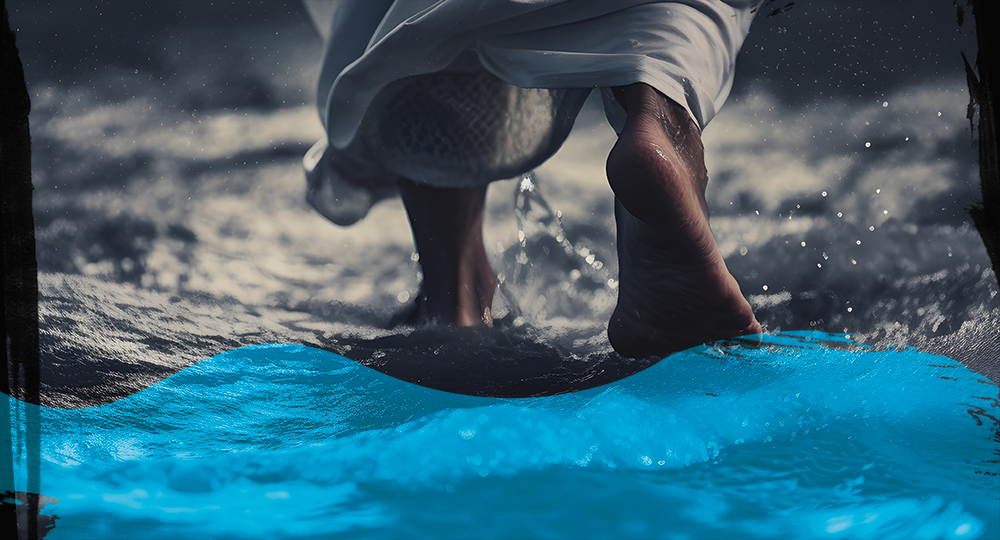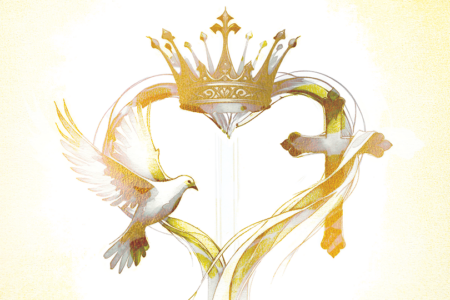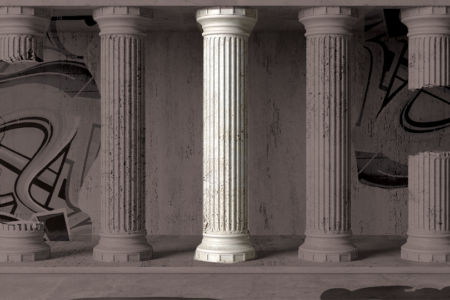Do You Believe in Miracles?
A look at seven of Jesus’ miracles and the wonderful truths they reveal about the Jewish Messiah
It was dubbed the “Miracle on Ice.” On February 22, 1980, the United States Olympic hockey team defeated the heavily favored, four-time defending gold medalist Soviet Union team 4–3 in Lake Placid, New York. Sports Illustrated called the game the greatest sports moment of the 20th century. As the game clock counted down to zero, 34 million TV viewers heard announcer Al Michaels ask the now-famous question, “Do you believe in miracles?”
Forty-four years later, I ask you the same question: Do you believe in miracles? Not sports miracles, but Jesus’ miracles? British author C. S. Lewis defined a miracle as “an interference with Nature by supernatural power.”
Not everyone believes in miracles. The Jewish leaders in Jesus’ day didn’t believe in His supernatural power even though they saw it with their own eyes. They still asked Him, “How long do You keep us in doubt? If You are the Christ [Messiah], tell us plainly” (Jn. 10:24).
His response: “I told you, and you do not believe. The works that I do in My Father’s name, they bear witness of Me” (v. 25). What more could He possibly have done? In contrast, His disciples “believed in Him” after His first miracle (2:11).
John, a Jewish apostle, recognized Jesus was the Messiah, the Son of God; and he believed the miracles verified that truth. Here are seven of Jesus’ miracles that John recorded in his Gospel so “you may believe that Jesus is the Christ, the Son of God, and that believing you may have life in His name” (20:31).
Jesus Turned Water to Wine
After spending 40 days in the wilderness without food or water, relying solely on the Spirit of God, and using Scripture as His only defense, Jesus resisted Satan’s temptations. Refreshed, Jesus gathered His disciples and joined His family in Galilee, attending a wedding in Cana. He chose this simcha (Hebrew for “joyous event”) to go public with His first miracle.
At the wedding, Jesus’ mother, Mary, pointed out there was no more wine (2:3). Explaining to her, “My hour has not yet come” (v. 4), Jesus nevertheless ordered the servants to fill six waterpots with water. Without so much as touching the vessels, He told the servants, “Draw some out” (v. 8).
Instead of water, wine flowed out—the best wine of the celebration. Jesus defied nature by producing, aging, juicing, and processing grapes. He saved the master of the feast from embarrassment. The guests certainly took notice, “and His disciples believed in Him” (v. 11).
Jesus used the ordinary to do the extraordinary.
Jesus Healed a Nobleman’s Son
News about the water turning to wine traveled fast and far. A nobleman heard and came to Jesus to ask Him to come to his home in Capernaum to heal his dying son (4:47).
Jesus honored the request without accompanying the man. Instead, He said, “Go your way; your son lives” (v. 50). The nobleman took Jesus at His word, and his faith was rewarded when he learned his son was healed precisely when Jesus said, “Your son lives.” The nobleman and his whole family came to believe in Jesus, who displayed His power over sickness and death (v. 53).
Jesus is the great Physician and Healer.
Jesus Healed a Man at the Pool of Bethesda
Like all Jewish men, Jesus was in Jerusalem during one of the feasts of Israel (5:1; cf. Dt. 16:16). Gathered around a pool called Bethesda near the Sheep Gate stood a large crowd composed of the sick and lame who hoped to be the first in the pool when an angel came to stir the water so they could be healed. Jesus saw a man “who had an infirmity thirty-eight years” (Jn. 5:5) and who was physically unable to get into the pool himself. No one helped him. He had no hope.
Jesus asked him, “Do you want to be made well?” (v. 6). The man told his sad tale to Jesus, who responded, “Rise, take up your bed and walk” (v. 8). Immediately, the man picked up his bed and walked. “That day was the Sabbath” (v. 9), which riled the Jewish leadership on two counts: (1) Jesus miraculously healed the man, and (2) He instructed him to pick up and carry his bed, which they considered unlawful on the Sabbath. So, they persecuted Jesus and sought to kill Him (vv. 16, 18).
Jesus is Lord of the Sabbath.
Jesus Fed 5,000
Huge crowds began to follow Jesus. He tested His disciples, asking, “Where shall we buy bread [to feed the people]?” (6:5). The apostle Philip confirmed what Jesus already knew: They did not have enough money.
The apostle Andrew stated that a young boy had brought his lunch of five barley loaves and two small fish (v. 9). Jesus took that lunch; sat the huge crowd down; blessed the food; and turned one lunch into a feast for 5,000 men, in addition to women and children, with food to spare (vv. 10–13; Mt. 14:21).
Many people realized He was the Prophet predicted by Moses (Jn. 6:14): “The LORD your God will raise up for you a Prophet like me from your midst, from your brethren. Him you shall hear” (Dt. 18:15).
Jesus is the Bread of Life (Jn. 6:48).
Jesus Walked on Water
After the multitudes finished their picnic, they wanted to make Jesus their king (v. 15). But He slipped away. His disciples sailed to Capernaum but hit a storm. In the dark, with a great wind blowing, a figure approached them, walking on the water; and they were terrified.
The figure was Jesus. He calmed the wind, the waves, and the men; and immediately the boat arrived at the disciples’ destination (vv. 15–21). Jesus defied gravity and physics by transporting them to shore.
Jesus the Creator is Lord of the storm.
Jesus Healed a Blind Man
In Jerusalem, Jesus encountered a man born blind. It had to be frustrating to live in a world full of magnificent sights and not be able to see them. But far worse off were the Jewish leaders who saw physically but were blinded to spiritual truth that lay in plain sight.
The focus of this miracle was not about how the man became blind but, rather, why He was blind: to glorify God. Jesus made clay from mud and saliva, applied it to the man’s eyes, and sent him to wash in the pool of Siloam.
This became a twofold miracle. The man exclaimed, “Though I was blind, now I see” (9:25). But even more importantly, he was able to say, “Lord, I believe” (v. 38) when Jesus revealed Himself as the Son of God (vv. 35–37). Yet the leaders remained blind.
Jesus is the Light of the world (8:12; 9:5).
Jesus Raised Lazarus
Of the seven miracles John recorded, raising Lazarus from the dead was the pièce de résistance. Though Jesus could have healed Lazarus, He allowed His friend to die to provide undeniable proof that He was the Messiah.
In His humanity, Jesus wept for His friend; but Lazarus needed to die so that Jesus could bring him back to life. When Jesus called his name and Lazarus emerged from the tomb, the miracle authenticated Jesus’ declaration, “I am the resurrection and the life. He who believes in Me, though he may die, he shall live. And whoever lives and believes in Me shall never die” (11:25–26).
Jesus truly is the Resurrection and the Life.
I hope you believe in miracles because Jesus is, as C. S. Lewis stated, the supernatural power who interferes with nature. Each of His miracles revealed an aspect of His human and divine natures. In His humanity He showed His compassion, wisdom, and love. In His deity He showed His power over sickness, laws of nature, and even death. What more could He have done to show us that He is the Son of God and Lord of all?
Later in his Gospel, John recorded an amazing truth Jesus shared about Himself: “No longer do I call you servants, for a servant does not know what his master is doing; but I have called you friends, for all things that I heard from My Father I have made known to you” (15:15). The Lord of all creation wants a relationship with us. That is a miracle for all time.
Photo: Adobe Stock








Amen, Steven!